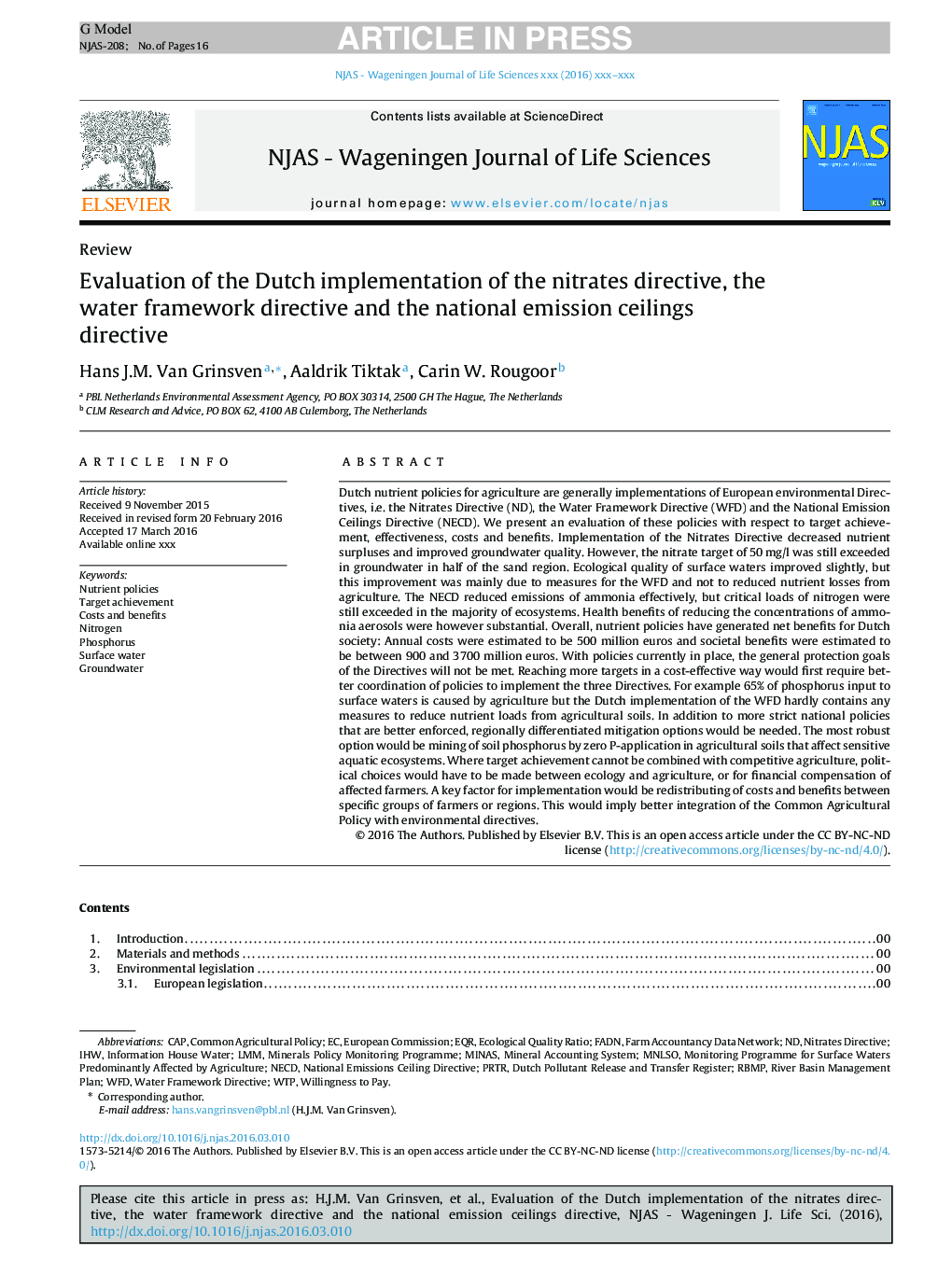| کد مقاله | کد نشریه | سال انتشار | مقاله انگلیسی | نسخه تمام متن |
|---|---|---|---|---|
| 6372239 | 1624059 | 2016 | 16 صفحه PDF | دانلود رایگان |
عنوان انگلیسی مقاله ISI
Evaluation of the Dutch implementation of the nitrates directive, the water framework directive and the national emission ceilings directive
ترجمه فارسی عنوان
ارزیابی اجرای هلند از دستورالعمل های نیترات، دستورالعمل چارچوب آب و دستورالعمل های سقف انتشار ملی
دانلود مقاله + سفارش ترجمه
دانلود مقاله ISI انگلیسی
رایگان برای ایرانیان
کلمات کلیدی
IHWNECDPRTRFADNLMMEQRWFDWTPGroundwater - آب های زیرزمینیSurface water - آبهای سطحیWillingness to pay - تمایل به پرداختNitrates Directive - دستورالعمل NitratesWater Framework Directive - دستورالعمل چارچوب آبCommon Agricultural Policy - سیاست مشترک کشاورزیFarm Accountancy Data Network - شبکه داده حسابداری مزرعهRiver Basin Management Plan - طرح مدیریت حوضه رودخانهPhosphorus - فسفرMINAS - معادنecological quality ratio - نسبت کیفیت اکولوژیکیNitrogen - نیتروژنCosts and benefits - هزینه ها و مزایاCaP - کلاه لبه دارEuropean Commission - کمیسیون اروپایی
موضوعات مرتبط
علوم زیستی و بیوفناوری
علوم کشاورزی و بیولوژیک
علوم کشاورزی و بیولوژیک (عمومی)
چکیده انگلیسی
Dutch nutrient policies for agriculture are generally implementations of European environmental Directives, i.e. the Nitrates Directive (ND), the Water Framework Directive (WFD) and the National Emission Ceilings Directive (NECD). We present an evaluation of these policies with respect to target achievement, effectiveness, costs and benefits. Implementation of the Nitrates Directive decreased nutrient surpluses and improved groundwater quality. However, the nitrate target of 50Â mg/l was still exceeded in groundwater in half of the sand region. Ecological quality of surface waters improved slightly, but this improvement was mainly due to measures for the WFD and not to reduced nutrient losses from agriculture. The NECD reduced emissions of ammonia effectively, but critical loads of nitrogen were still exceeded in the majority of ecosystems. Health benefits of reducing the concentrations of ammonia aerosols were however substantial. Overall, nutrient policies have generated net benefits for Dutch society: Annual costs were estimated to be 500 million euros and societal benefits were estimated to be between 900 and 3700 million euros. With policies currently in place, the general protection goals of the Directives will not be met. Reaching more targets in a cost-effective way would first require better coordination of policies to implement the three Directives. For example 65% of phosphorus input to surface waters is caused by agriculture but the Dutch implementation of the WFD hardly contains any measures to reduce nutrient loads from agricultural soils. In addition to more strict national policies that are better enforced, regionally differentiated mitigation options would be needed. The most robust option would be mining of soil phosphorus by zero P-application in agricultural soils that affect sensitive aquatic ecosystems. Where target achievement cannot be combined with competitive agriculture, political choices would have to be made between ecology and agriculture, or for financial compensation of affected farmers. A key factor for implementation would be redistributing of costs and benefits between specific groups of farmers or regions. This would imply better integration of the Common Agricultural Policy with environmental directives.
ناشر
Database: Elsevier - ScienceDirect (ساینس دایرکت)
Journal: NJAS - Wageningen Journal of Life Sciences - Volume 78, September 2016, Pages 69-84
Journal: NJAS - Wageningen Journal of Life Sciences - Volume 78, September 2016, Pages 69-84
نویسندگان
Hans J.M. Van Grinsven, Aaldrik Tiktak, Carin W. Rougoor,
